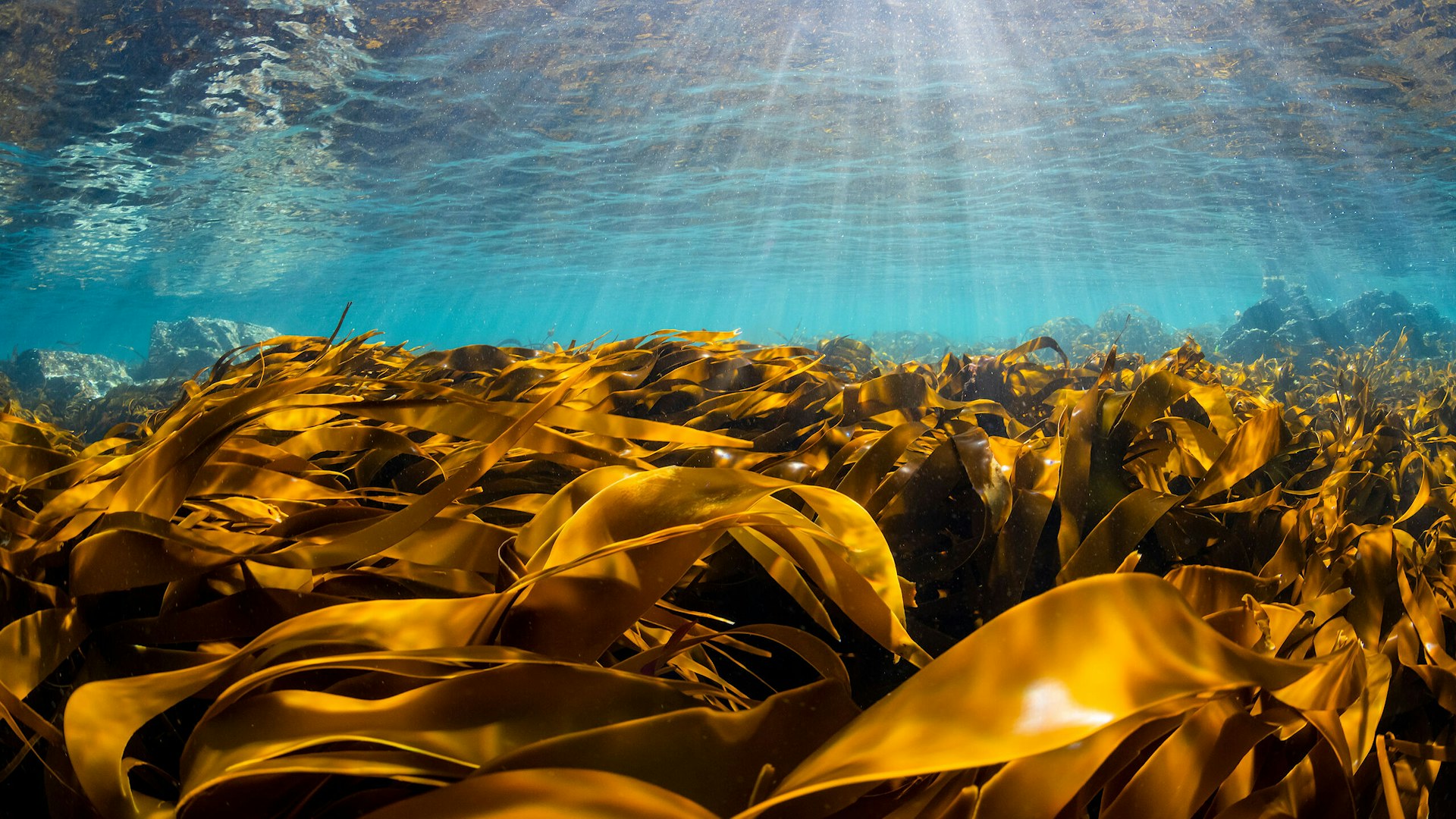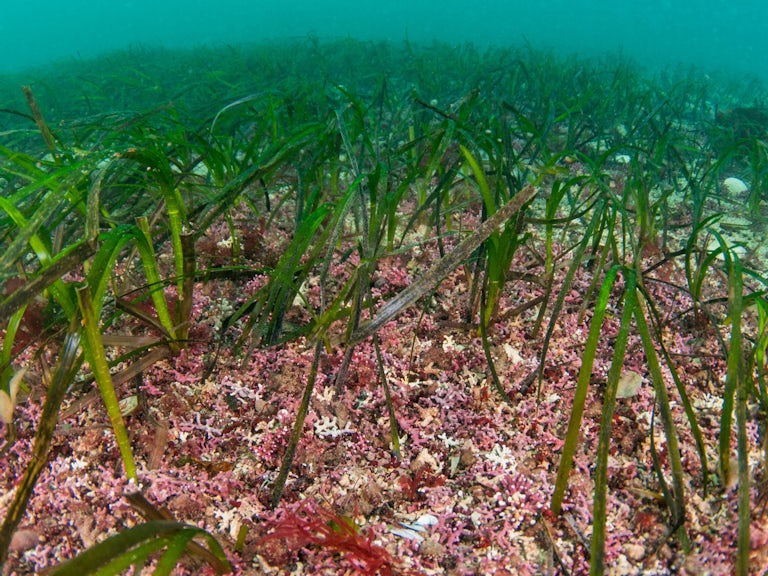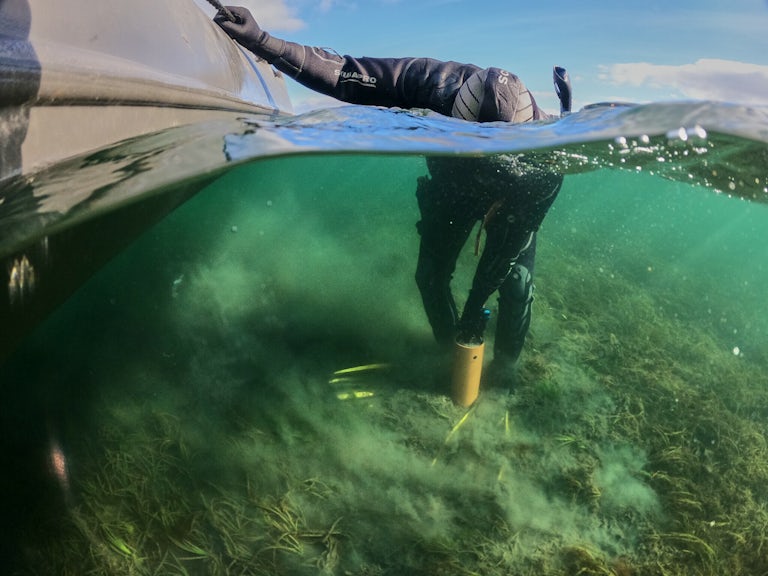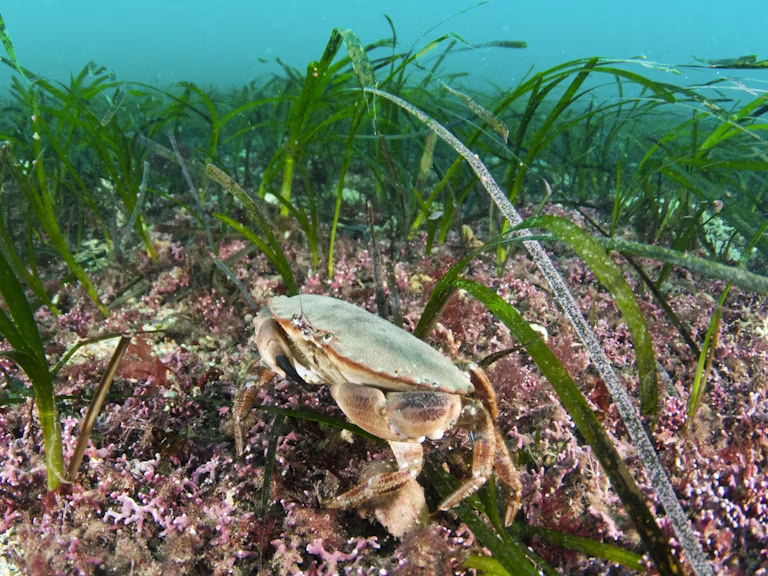Kelp
Laminariales
Underwater kelp forests support abundant marine life, capture carbon and protect our coasts from erosion and flooding.

How it shapes the landscape
Known as the forests of the sea, dense kelp areas create some of the most biodiverse environments on the planet. The stalks serve as habitats for worms and small crustaceans, which burrow into them. The fronds (kelps’ leaves, which contain air bubbles to make them float upright) provide shelter, feeding and nursery grounds for marine species such as cuttlefish, lobster, seabream and bass.
Their abundance, in turn, attracts larger predators such as grey seals. The result is a thriving underwater ecosystem that also benefits coastal communities by improving water quality, reducing erosion and drawing down carbon at a higher rate than most trees on land, aiding in the fight against climate change.
Where it likes to be
Found on rocky seabeds from the low tide line down to a depth of 45m, kelp thrives in the cool temperate and polar regions of the world’s seas. Out of the 14 species of kelp growing in Europe, we can find seven of them in British waters.
In areas where there’s severe wave exposure, you’re most likely to find winged kelp (Alaria esculenta), while at the opposite end sugar kelp (Saccharina latissima) – named for the sweet white powder that comes to the surface as it dries – prefers sheltered conditions and can often be found in rock pools. Somewhere in between are Britain’s most common forms of kelp, namely oarweed, also known as tangleweed (Laminaria digitata), and cuvie (Laminaria hyperborea). All of these species only grow where water is shallow enough for light to reach the seabed.

DID YOU KNOW?
Kelp is a valuable ingredient in cosmetics such as soaps, lotions and shampoos, as its fatty acids help moisturise the skin.
BACKGROUND STORY
Britain has the highest diversity of kelp in Europe. However, most of our kelp forests have been destroyed by adverse weather coupled with human pressures, such as bottom trawling, leaving seabeds lifeless and removing natural defences against coastal erosion.
Rising sea temperatures also pose a significant threat to kelp, which thrives in cooler waters. In addition to its benefits for marine life, kelp has various applications for people. Cast-off blades that washed ashore were commonly used by 18th- and 19th-century farmers to fertilise their crops. As a nutrient-dense food, kelp is sustainable when harvested responsibly, due to its rapid growth rate.

KELP’S FUTURE IN BRITAIN
Britain has the potential to be surrounded by thousands of square miles of kelp forests, which could support thriving marine wildlife and benefit coastal communities through sustainable fishing, nature-based tourism and educational programmes.
One major restoration project currently underway is off the Sussex coast, where a byelaw has introduced an exclusion on nearshore bottom trawling. The kelp forests there originally stretched up to an incredible 25 miles long and 2.5 miles wide, but 96% of them had been wiped out by the 1980s — largely due to a rapid expansion in the area of this destructive fishing practice.
With a partnership involving many local and national organisations, the Sussex Kelp Recovery Project aims to allow researchers to assess whether the kelp is naturally regenerating, accurately measure its environmental impact and advocate for active restoration efforts across the rest of Britain’s coasts.
IN SUMMARY
- Dense kelp forests create rich and valuable habitats
- Protects coasts from erosion and flooding
- Sequesters carbon more effectively than most plants
- Fast growing which allows for its sustainable cultivation

Rewilding in action
Kelp forests are vital for supporting marine biodiversity in Britain.
Meet the rewilders of the Sussex Kelp Recovery Project who are actively restoring these habitats.
Find out more
- Brodie J. et al. (2014). The future of the northeast Atlantic benthic flora in a high CO2 world. Ecology and Evolution, 4(13), 2787–2798.
- Slade F. et al. (2023). Marine Natural Capital Policy Brief. Brief prepared by the
Marine Planning and Governance Forum, Marine Alliance for Science and Technology for Scotland (MASTS). - Smale D. A. et al. (2013). Threats and knowledge gaps for ecosystem services provided by kelp forests: a northeast Atlantic perspective. Ecology and Evolution, 3(11), 4016–4038.
- Williams C. et al. (2022). Rewilding the Sea? A rapid, low cost model for valuing the ecosystem service benefits of kelp forest recovery based on existing valuations and benefit transfers. Frontiers in Ecology and Evolution, 10.



